ft. of torque from its electric motor. But there is no full electric mode like a Toyota Prius or Ford Escape hybrid.
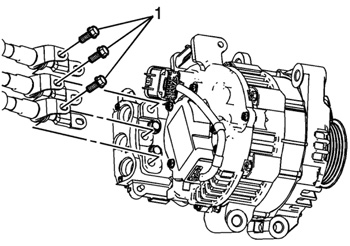
The mild hybrid system in the VUE adds about $2,000 to the base price of the vehicle for a rather modest gain in fuel economy. In fact, one of the major complaints Saturn VUE hybrid owners have had about their vehicles is disappointing fuel economy. It is better than what a regular VUE gets, but not as great as what they thought it would be. Of course, a lot depends on how the vehicle is driven.
With a light throttle, the VUE is fully capable of achieving its claimed fuel economy, or even better. But nobody is going to get good fuel economy with jackrabbit starts and a heavy foot. Wind resistance and rolling resistance affects fuel economy, too, so you can’t expect to get maximum fuel economy bucking a strong head wind or driving on underinflated tires.
BAS System
The “Belt-Alternator-Starter” (BAS) system used in the VUE is essentially a bolt-on hybrid conversion that uses an oversized, belt-driven alternator/starter motor mounted on the side of the engine. The BAS alternator actually outputs two different voltages: 12 volts for the vehicle’s electrical system and conventional battery, and 36 volts to maintain the charge of the nickel-metal-hydride hybrid battery pack located behind the rear seats.
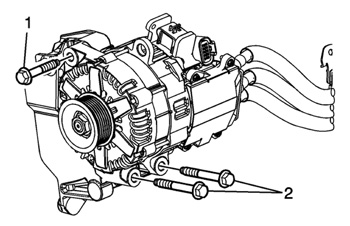
On the back of the BAS unit are three large cable connections that carry the 36 volts to the battery pack. The 36-volt cables are color-coded orange.
The BAS alternator’s output is controlled by two modules: the main generator control module, and an auxiliary control module. In normal driving mode, the generator control module converts the alternator’s three-phase, 36-volt alternating current (AC) output to 36 volts direct current (DC) to keep the hybrid battery charged. In start/stop mode, the generator module also converts 36 volts DC from the hybrid battery back into 36 volts AC when the BAS unit requires power to restart the engine, or to provide some extra kick when accelerating.
The auxiliary control module, on the other hand, functions like a conventional regulator. It converts the alternator’s 36-volt AC output to 12 volts DC. The output through the auxiliary module is used to meet the vehicle’s electrical needs and to maintain the charge of the regular 12-volt battery (which is used for initial starting).
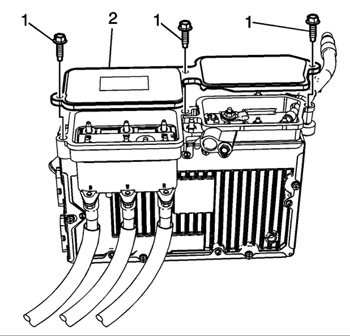
The high-voltage generator control module runs hot, so it has its own separate coolant pump to keep engine coolant circulating when the engine is off during the start/stop mode. The generator coolant pump shares an electrical circuit with a second electric pump that keeps coolant circulating to the heater core when the engine is off in start/stop mode. Power for both pumps is controlled by the generator module, and routed through a single 10-amp hybrid pump fuse in the fuse block assembly.
A third pump is also used to keep transmission fluid circulating in the transmission when the engine is off during start/stop mode. The transmission fluid pump is powered through its own relay, and controlled by a separate transmission fluid pump control module.
BAS Applications
The same BAS system that is used in the Saturn VUE has also been used in the 2008 Saturn Aura hybrid, and the 2009 Chevy Malibu hybrid. The total number of GM hybrid models that have been built with the mild hybrid system has only been about 15,000 vehicles per year due to limited battery manufacturing capabilities. So although there are not a lot of these vehicles on the road today, we will be seeing more as hybrid technology continues to move forward.
In the next couple of years, GM says it will introduce a second generation BAS system that is smaller, lighter, more powerful and less expensive than the current version. The BAS 2 system uses a more powerful 120-volt battery, and will likely be offered on a greater variety of models and in much higher volume to help GM meet the new federal fuel economy requirements.
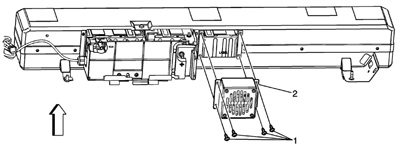
GM was also planning to introduce a new two-mode full hybrid version of the VUE for 2009, but that plan was temporarily shelved by GM’s financial woes. The Saturn VUE 2-Mode hybrid was to have used the same hybrid technology that is currently available in the Chevy Tahoe, GMC Yukon and Cadillac Escalade hybrids. Like the Prius and Ford Escape hybrids, there is a full electric mode when the vehicle initially starts to move. If the 2-Mode Saturn VUE hybrid is built, it will be equipped with a direct injection 3.6L V6 with a 300-volt hybrid battery.
Battery Woes
When GM launched the Saturn VUE hybrid, they got off to a very bad start — literally. Problems with the 36-volt hybrid battery were causing the hybrid system to shut down. The problem turned out to be a manufacturing defect that allowed internal leakage within the battery. GM had to recall about 9,000 vehicles to replace the battery (which is covered by an eight-year, 100,000-mile warranty), and the battery supplier (Cobasys) had to revise its original battery design and manufacturing process to fix the fault. Since then, electrical problems have continued to plague Saturn VUE owners.
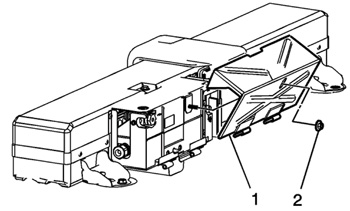
According to a survey of vehicle owners by Consumer Reports, 25% of Saturn VUE hybrid owners said they had experienced one or more electrical problems. What’s more, the VUE hybrid ranked the lowest of all minivans in terms of reliability (4.0 out of 10) on a survey conducted by J.D. Power and Associates.
The hybrid battery is very sensitive to heat as well as voltage variations. The hybrid battery consists of three separate 12-volt modules or “cassettes” as GM calls them, connected in series to achieve 36 volts. Each cassette has a pair of thermistors to monitor battery temperature. The battery cassettes must be removed to get to the sensors. The temperature readings from the sensors are used by the Battery Energy Control Module (BECM), which is also called the Battery Disconnect Unit (BDU), to operate a cooling fan located on the back of the battery pack.
The battery control module is mounted on the outside rear of the battery pack. All current that flows into and out of the battery goes through this module, so the positive and negative 36-volt battery cables are both attached to the module rather than the battery. Other cables connect the module to the battery cassettes inside the battery holder.
If the battery pack gets too hot, the BECM will shut down the system. Consequently, any problems with the temperature sensors or cooling fan can cause a complete hybrid system shutdown.
The vehicle can still be driven — at least for a while — but without hybrid start/stop or electronic power assist modes, and without any 12-volt or 36-volt charging output from the BAS unit. That’s bad news because it means the vehicle will be running on the regular 12-volt battery until it saps all the juice from the battery. With luck, the vehicle might continue to run for 30 to 60 minutes on the 12-volt battery before it dies and everything shuts down.
At that point, a tow truck will have to be called because the engine won’t start. A jump-start won’t help either because there’s no charging output from the BAS unit to keep the engine running with a dead battery.
To get the vehicle back on the road, you’ll have to find out what failed (and why), and then fix the fault to get the hybrid system up and running again. If you’re lucky, the Check Engine light will be on and you’ll find one or more diagnostic trouble codes with your scan tool to help guide your diagnosis. The hybrid-related fault codes display as P1AXX, where the X’s are numbers or letters that correspond to particular faults. Most battery-related faults will set codes ranging from P1A22 to P1A59.
If you’re not so lucky (no codes found), check all the hybrid system fuses and relays, then check all the 36-volt wiring connections and wiring harness for possible faults. If everything appears to be okay, the fault will likely turn out to be a bad battery temperature sensor or a module fault.
If you have to replace a battery sensor, they are not cheap. The list price is $114 through your Saturn dealer. The BECM module, hybrid battery, BAS unit, generator control module and auxiliary control module are also quite expensive and dealer-only parts.
The BECM module for the battery is located on the battery, but the generator and auxiliary control modules are located in the engine compartment (driver’s side), under a protective cover.
Service Issues
Unlike other hybrid vehicles with high-voltage batteries, the voltage in the Saturn BAS system is not high enough to be lethal. Even so, 36 volts can create quite an arc compared to 12 volts. A 200-amp fuse by the negative terminal of the hybrid battery pack provides overload protection.
WARNING: DO NOT attempt to service or replace any 36-volt hybrid components without first isolating the hybrid battery.
Here’s the procedure:
1. Disconnect the negative cable from the regular 12-volt battery in the engine compartment.
2. Tilt the rear seats forward and release the latches on the inside of the rear seat riser.
3. Remove the battery disconnect control module cover nut, then slide the cover to the right to remove the cover. The module will isolate the battery from the rest of the 36-volt electrical system.
4. Wait at least 5 minutes for the high-voltage capacitors in the module to discharge and dissipate their stored voltage. The battery should not be isolated from the rest of the 36-volt electrical system.
5. As an added precaution, GM recommends using a voltmeter to check for voltage BEFORE you proceed. Check for voltage between the battery pack positive and negative cable terminals, between the positive cable and ground, and between the negative cable and ground. If all voltage readers are 3 volts or less, it is safe to proceed.
A search for technical service bulletins on the Saturn VUE hybrid system failed to turn up much of anything, except for the battery recall. But we’ve heard of other issues on these vehicles that are not related to the hybrid system.
Other problems include brake line leaks, loose exhaust manifold bolts, fuel gauge problems and engine lubrication problems.
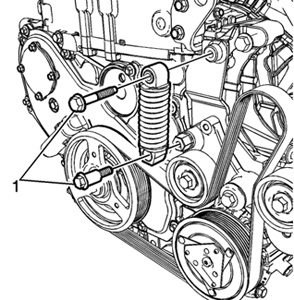
The serpentine belt that drives the BAS unit as well as the other engine-mounted accessories will likely be a high replacement item because of the added strain created by the hybrid start/stop and power assist modes. Check the condition of the belt as well as belt alignment and tension if belt noise is noticeable. The belt tensioner on this application uses a large external coil spring, which requires a special tool (EN48932) to remove. The spring compressor tool fits around the outside of the spring to compress and hold the spring. Once tension has been relived, the bolts at the top and bottom of the spring can be unfastened to remove the spring.
Other service procedures on the Saturn VUE hybrid are essentially the same as on the regular VUE. You do have to be careful refilling the cooling system to make sure there are no air pockets, and that coolant is reaching the generator control module. GM recommends refilling the cooling system with a 50/50 mixture of Dex-Cool and distilled water.












